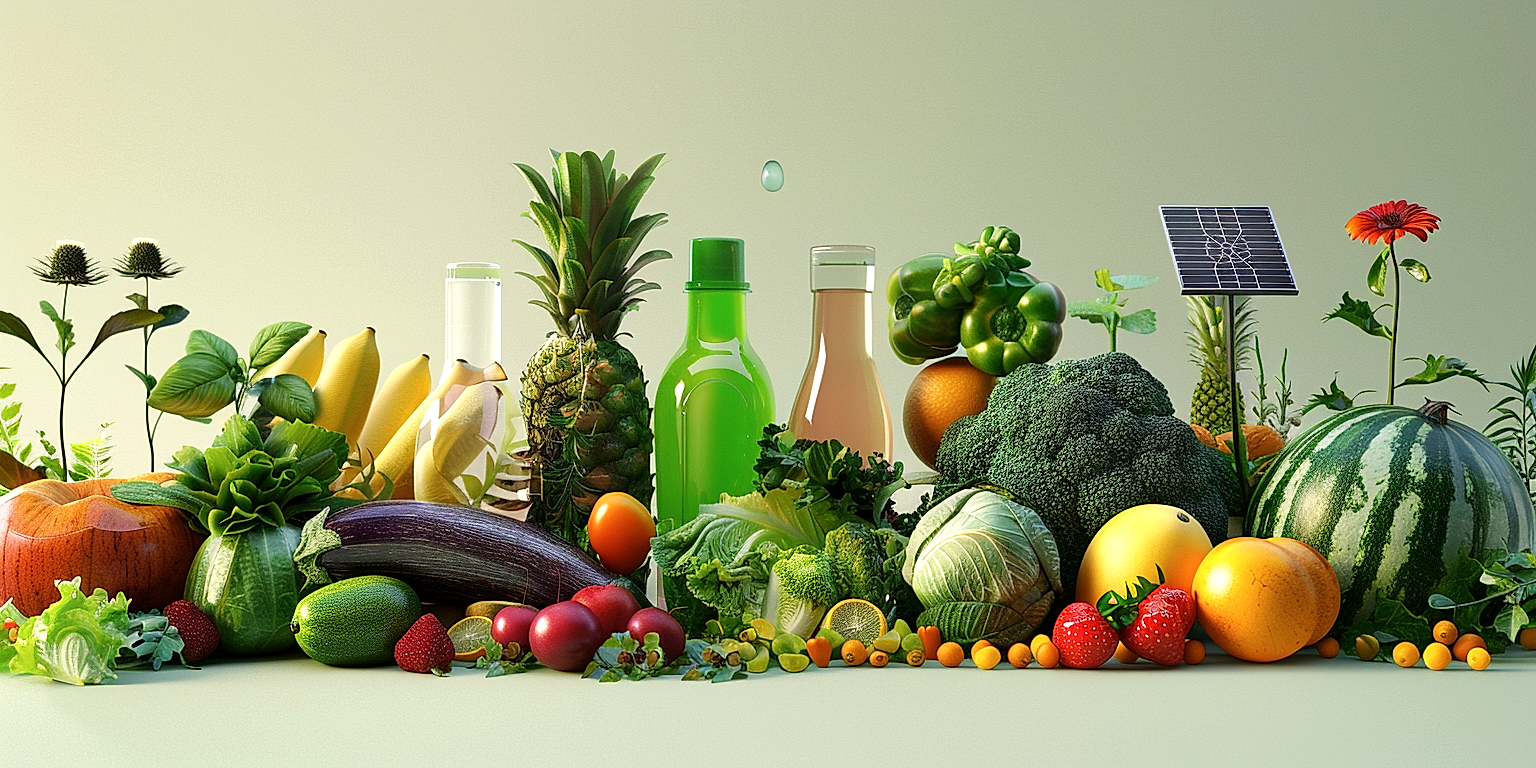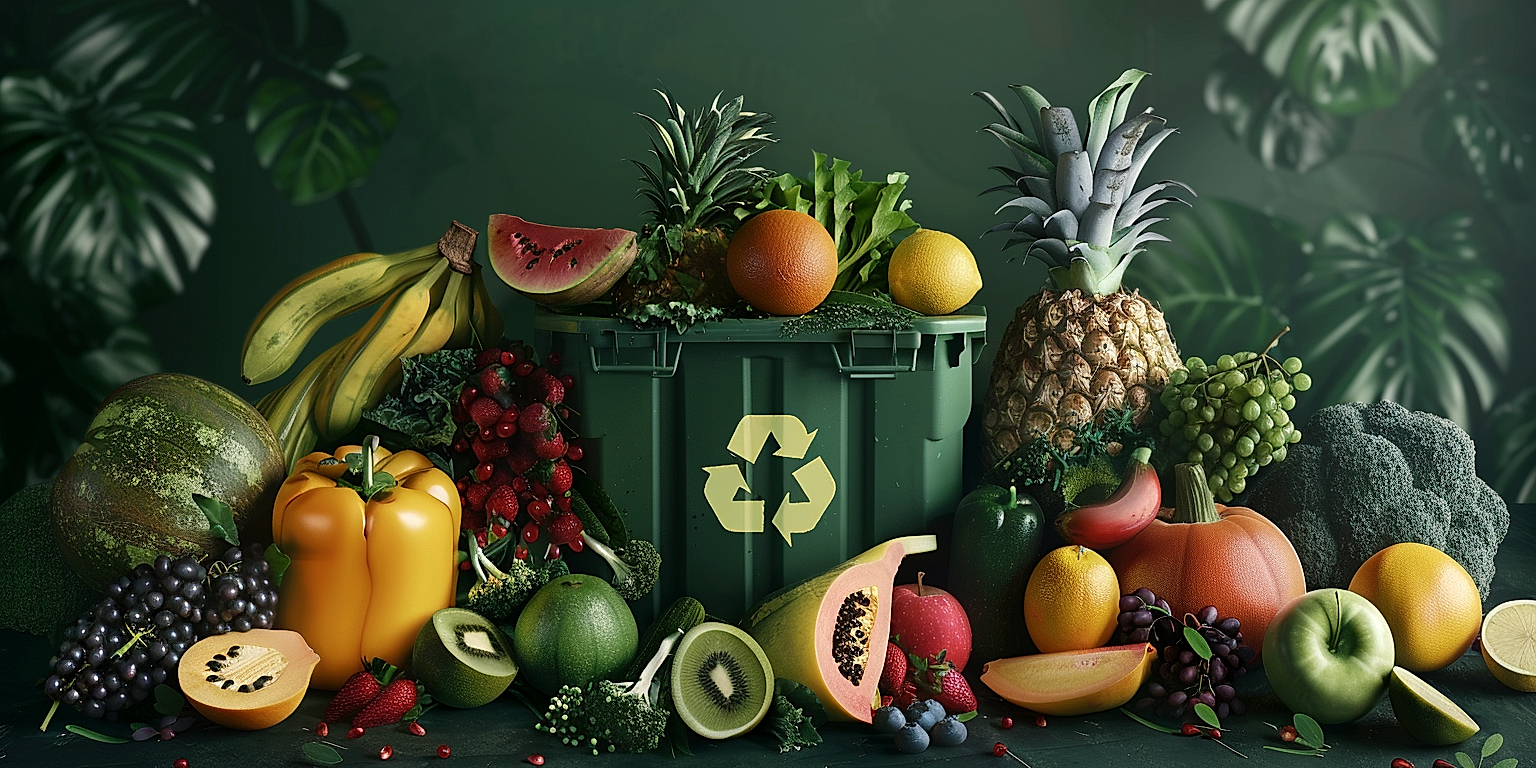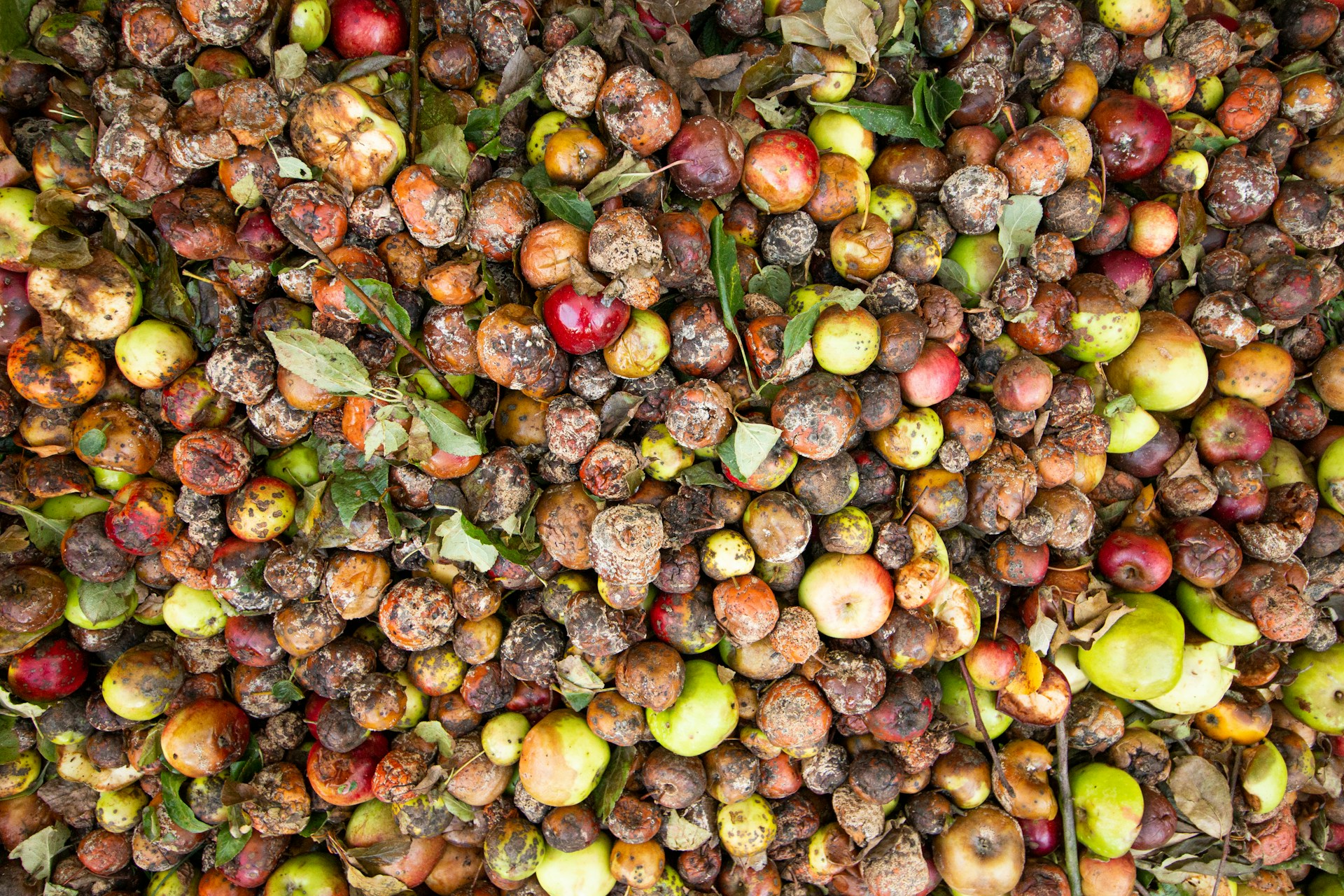Reducing waste from the production of food commodities is gaining paramount importance in today’s world.
Environmental sustainability is now a key facet of the food processing sector, with notable innovations being developed to address waste issues.
Progress has been seen particularly in the realm of processing fruits and vegetables.
The burgeoning interest in minimizing waste and optimizing resources has led to breakthrough technologies and revolutionary practices.
This article will delve into various mechanisms and strategies involved in waste reduction.
It aims to provide a comprehensive understanding and appreciation of the strides that have been made in this arena.
Contents
- Innovations In Waste Reduction For Produce Processors
- 1. Advanced Waste-Heat Recovery Technology
- 2. Implementation of Solar Dehydration Systems
- 3. Use of Anaerobic Digestion Systems
- 4. Introduction of Biodegradable Packaging
- 5. Edible Coatings for Longer Shelf Life
- 6. Enzyme-based waste management processes
- 7. Automated Sorting and Grading Systems
- 8. AI-Enabled Precision Watering Methods
- 9. Turning Food Waste into Biofuel
- 10. Implementation of closed-loop supply chains.
- The Bottom Line
Innovations In Waste Reduction For Produce Processors
1. Advanced Waste-Heat Recovery Technology
In the realm of food processing, the advent of advanced waste-heat recovery technology presents a substantial opportunity for waste minimization.
Traditionally, food processing systems have generated copious amounts of heat, which were largely regarded as non-recoverable waste.
However, contemporary scientific developments have paved the way for innovative technologies which can harvest this previously discarded heat and convert it into usable energy, enhancing overall efficiency and promoting environmental sustainability.
The core premise of waste-heat recovery technology is centered on the principles of energy conservation and reutilization.
By utilizing advance heat exchangers and thermoelectric generators, it has now become possible to harness this energy and significantly curtail waste.
Unsurprisingly, this breakthrough in thermal management has drawn considerable attention in the food processing industry, largely due to its potential for substantial energy and cost savings.
In essence, instead of allowing excess heat to escape into the environment, this method recycles the valuable thermal energy by transferring it to other areas of the production line which require heat input.
For example, in certain processes, harvested heat can be used for pre-heating raw materials or maintaining ideal storage conditions, thus optimizing the plant’s overall energy utilization.
Advanced waste-heat recovery technologies have proven particularly useful in large-scale food processing operations where high volumes of heat are generated on a routine basis.
Yet, their scalable nature means they are equally beneficial for smaller facilities striving to curb their energy consumption and environmental footprint.
Furthermore, in line with the global drive to embrace cleaner, more sustainable methods of production, shifting toward such innovative technologies is no longer a choice, but a business imperative.
Implementing these efficient waste-heat recovery systems not only reduces the overall energy requirements of the plant but also results in lower emissions of greenhouse gases associated with energy production.
From an economical perspective, the reduced reliance on external energy sources also translates into a significant reduction in energy costs, thereby boosting the profit margins of the food processors.
Indeed, the business case for advanced waste-heat recovery technologies is further strengthened by legislative pressures on industries to mitigate their environmental impacts.
All in all, as the attention of the world increasingly turns towards cleaner and more sustainable practices in all realms of production, advanced waste-heat recovery technologies provide a compelling opportunity for produce processors to minimize waste, optimize efficiency, and contribute positively towards the global sustainability endeavors.
2. Implementation of Solar Dehydration Systems
Solar energy is one of the most abundant resources we have, and with modern technology, its potential is being harnessed more than ever before in the form of solar dehydration systems.
The process of solar dehydration is relatively simple as it primarily involves the use of the sun’s rays to gradually remove moisture from produce.
This sophisticated method is used as a waste reduction strategy, mainly implemented for the processing of produce like fruits and vegetables.
Through solar dehydration systems, agricultural businesses can significantly reduce the amount of waste generated, prolong the shelf life of their products, improve cost-effectiveness, and generate less harmful emissions into the atmosphere.
Let’s look at the technical aspects: these systems comprise solar collectors, dehydrators, and storage facilities, all designed to work together in an efficient dehydration chain.
Produce is placed into the solar dehydrator which, with the aid of solar collectors, heats up the air to speed up the evaporation process, subsequently causing dehydration.
Unlike traditional methods that use fossil fuels, solar dehydration systems utilize renewable energy, significantly cutting down energy costs and carbon emissions.
This kind of innovation also promotes sustainability, a paramount factor in today’s agricultural and manufacturing sectors.
Solar dehydration serves a crucial role in promoting food security because dehydrated food has increased shelf life and retains most of its nutritional content.
In regions where energy is scarce or weather conditions are unpredictable, solar dehydration systems present an economical and practical alternative.
Moreover, these systems can be set up in remote regions, supporting rural economies and offering an efficient solution to handle surplus crop production and minimizing food waste.
Even though the initial costs of setting up solar dehydration systems could be high, the long-term benefits in waste reduction, cost savings, and sustainability are immense.
Moreover, businesses that adopt this technology convey a powerful message about their commitment to environmental stewardship and sustainable practices.
While there are still many industries and regions where the adoption of solar dehydration systems is yet to take root, their potential in waste management is undeniable.
Consequently, its implementation shows promise not only in revolutionizing waste management in produce processing but also in pushing the agriculture sector towards sustainable and eco-friendly practices.
3. Use of Anaerobic Digestion Systems
The transition towards sustainable practices in the produce processing industry has been greatly facilitated by the progression of waste reduction technology, with a prominent role being played by the use of anaerobic digestion systems.
Anaerobic digestion is a natural fermentation process where organic waste is broken down in an environment devoid of oxygen, producing biogas and a soil fertilizer known as digestate.
The key advantage of anaerobic digestion systems lies in their multifunctionality.
Not only do they help in reducing the amount of waste sent to landfill, but also efficiently convert this waste into valuable by-products like biogas and natural fertilizers.
Anaerobic digestion, remarkably transforming the approach towards waste management, offers an effective, environmentally-friendly and economically viable solution for the processing industry.
This technology has been increasingly deployed in the produce processing industry to manage and reduce waste.
Produce waste, being a rich source of organic material, proves to be an ideal feedstock for these anaerobic digestion systems.
Systems can be tailored to process different waste typologies, making them versatile and adaptable.
Biogas, a byproduct of the process, can be used to generate heat and electricity or can be purified and injected into the gas grid.
The digestate, another byproduct, can be deployed as a natural fertilizer, returning essential nutrients back to the soil and reducing the reliance on chemical fertilizers.
With its high nutrient content, digestate can improve soil structure and productivity, promoting a sustainable agricultural cycle.
This technology also, notably, mitigates greenhouse gas emissions, as the organic waste that would otherwise decompose in landfill sites and release harmful methane gas, is effectively treated.
Implementation of anaerobic digestion systems encourages a circular economy approach, where waste is not viewed as an issue but a resource.
Undoubtedly, as innovations in waste reduction continue to evolve, the utilization of anaerobic digestion systems in the produce processing industry is set to see a significant uptake.
Such systems are a prime example of how effective it can be to combine innovation with sustainability to reduce waste and promote circularity within the sector.
4. Introduction of Biodegradable Packaging
As produce processors across the world grapple with the twin challenges of environmental conservation and waste management, the introduction of biodegradable packaging emerges as a potent solution.
Biodegradable packaging represents a significant innovation in waste reduction that substitutes conventional, harmful plastic packaging with a more sustainable alternative.
This type of packaging is designed to completely decompose under natural circumstances, leaving no visible or toxic residues.
Biodegradable packaging materials include processed plant starches, cellulose, proteins, and other bio-based polymers – all naturally occurring and therefore easily decomposable.
Furthermore, biodegradable packaging seamlessly integrates with other waste management processes, like composting or anaerobic digestion, thereby contributing to a closed-loop system of waste management.
Unlike traditional plastics that take hundreds of years to decompose and release toxic residues, biodegradable packaging decomposes in a matter of weeks or months, with no harmful by-products.
Overall, the transition to biodegradable packaging helps reduce the volume of waste heading to the landfill, reducing the carbon footprint of produce processors.
While biodegradable packaging typically costs more to produce compared to traditional packaging materials, it’s important to consider the long-term environmental benefits and savings on waste management costs.
Many consumers are also willing to pay a premium for green packaging, illustrating a shift in consumer behavior towards sustainable practices.
As regulatory authorities across the world are introducing stricter laws on waste generation and management, embracing biodegradable packaging could also help produce processors stay compliant with future regulations.
Moreover, biodegradable packaging supports produce processors in their endeavors of positioning themselves as environmentally responsible, a major advantage in the current eco-conscious marketplace.
From erosion control nets made of jute to mushroom-based packaging materials, the world of biodegradable packaging is full of extraordinary innovations.
While biodegradable packaging is not a panacea for all waste management issues, it’s a significant stride towards a more sustainable future in the produce processing industry.
Overall, biodegradable packaging plays an essential role in modern waste management strategies and is a cornerstone of innovations in waste reduction.
Challenges such as cost and scalability persist, but with advances in material science, the promise of affordable, mass-market biodegradable packaging is gradually becoming a reality.
5. Edible Coatings for Longer Shelf Life
Edible coatings have emerged as a promising technology that not only improves the shelf-life of fresh produce but also contributes significantly to waste reduction measures for producers.
These coatings are typically made from natural edible materials such as proteins, lipids, polysaccharides, and composites thereof, offering a safe and eco-friendly option.
When applied to the surface of fruits or vegetables, they create a semi-permeable barrier that slows down the ripening and deterioration process, consequently lengthening their freshness.
This reduction in perishability ensures that produce retains its desired quality and taste, hence reducing waste associated with spoilage.
Research upon these coatings shows that they can also serve as carriers for food-grade antimicrobials, antioxidants, and flavours further enhancing the quality and appeal of the produce.
Furthermore, they present a perfect solution as food processing bi-products or agricultural residues are among the materials used in their production, contributing to a more sustainable and circular food economy.
Producers incorporating these edible coatings benefit by profiting from produce that would have otherwise have gone to waste due to quick spoilage.
Retailers, on the other hand, find value in the increased freshness and longer shelf-life of produce, often translating into higher sales and fewer losses due to food spoilage.
Lastly, consumers greatly benefit from higher-quality and longer-lasting fresh produce, consequently minimizing their household food waste and reducing their food expenditures.
The process of producing and applying these edible coatings involve the use of minimal energy inputs and do not produce harmful emissions, adhering to sustainable production principles.
The application scope of these edible coatings is continuously growing with innovative solutions being developed targeting different types of fruits, vegetables, and even other food products like meat and cheese.
Challenges exist in this field in relation to regulatory aspects and ensuring consumer acceptance but these are being progressively addressed by pervasive research and communication efforts.
Increased collaborations between industry, academic and regulating bodies can help overcome these challenges and further hasten the implementation of edible coatings technology in food processing procedures.
It is foreseeable that when the wide adoption and acceptance of edible coatings achieves its full potential, it can transform the processes involved in the handling and storage of fresh produce along through the entire supply chain.
Edible coatings present an exceptionally realistic and effective solution for waste reduction in the produce processing industry, providing a greener and sustainable future.
6. Enzyme-based waste management processes
Given the amplified problem of waste management in the entire food industry, enzyme-based waste management processes are gaining traction as an innovative solution.
Enzymes, the proteins that speed up chemical reactions, are increasingly being used by produce processors to significantly reduce agricultural waste.
One promising approach is the use of enzymes to break down organic matter in farm waste, turning it into compost.
This method not only disposes of waste in an environmentally friendly way, but also creates valuable compost that can be reused to enrich soil.
By applying this method, several produce processors have succeeded in achieving a zero-waste model, turning a problematic waste byproduct into a valuable resource.
Adopting enzyme-based technology not only reduces waste but also decreases greenhouse gas emissions that are commonly associated with traditional waste management methods.
Βy using enzyme-based waste strategies, residues such as peels, leaves, stems, and other byproducts can be turned into an organic, high-quality compost.
This compost can then be applied to cultivated fields, reducing the need for chemical fertilizers and furthering the cause for a more sustainable agricultural cycle.
Apart from compost, these processes can also result in the production of bioenergy, representing another way to utilize waste productively.
Indeed, by breaking down organic waste, enzymes release methane gas which can be collected and used as a source of renewable energy.
Moreover, enzyme-based waste management is noteworthy for its efficiency:
It requires fewer resources and space than traditional composting systems and can effectively handle large quantities of organic waste materials from agricultural processing.
In terms of safety, enzyme-based waste management processes have proven to be harmless, non-toxic and risk-free for both workers and the environment.
This innovative solution holds immense potential for the produce processing industry, offering a range of benefits from cost savings to environmental sustainability.
In the face of growing waste management challenges, this is truly an innovative method worth considering by every produce processor committed to boosting sustainability in their operations.
7. Automated Sorting and Grading Systems
Automating the sorting and grading of produce is a significant innovation in waste reduction.
The implementation of automated systems in agriculture, particularly in sorting and grading produce, can result in reduced waste generation.
Tiered quality grading allows for appropriate use of produce at different levels of maturity, ensuring optimum use of resources.
Automation in sorting and grading of fruits and vegetables ensures that only the produce of the right size and quality reaches the market, minimizing waste.
Software algorithms, designed for the specific task of identifying and separating waste from usable produce, are at the heart of these automated systems.
These algorithms are often designed around artificial intelligence and machine learning logic, which allow for a more refined categorization of fruits and vegetables.
These sophisticated algorithms minimize the occurrence of human error and increase the efficiency of the sorting process.
Technologies like spectral imaging, optical sorting, and x-ray imaging are used in these automated systems to ensure high accuracy of grading.
These technologies enable rapid categorization of horticultural products based on color, size, shape, and internal and external defects, leading to an increase in the shelf-life and quality of the final packaged product.
The fruits that have not met the stringent quality parameters are not discarded, reducing wastage, and are directed towards processing into secondary products like juices, jams, and purees.
Thus, automated sorting and grading systems in produce processing significantly contribute to waste management.
Moreover, the advent of high-speed, high-capacity sorting and grading machines has increased throughput, resulting in the reduction of post-harvest losses and subsequent waste reduction.
The real-time data generated from these machines also allows for better decision-making in terms of the timing of harvest, the loading of trucks, and the utilization of storage areas.
As a result, the implementation of automated sorting and grading systems in our food supply chain has the potential to dramatically reduce food waste at all stages, from production to consumption.
From an economic perspective, the efficiency and effectiveness brought about by automated systems will reduce wastage costs and increase the profitability of produce processors globally.
Therefore, automated sorting and grading of produce is an important innovation that will help the global food industry to step up its waste reduction efforts.
8. AI-Enabled Precision Watering Methods
The advent of AI-enabled precision watering methods signifies a revolution in the sector of reducing waste in produce processing.
These novel methodologies make use of Intelligent technologies to accurately track and regulate water usage on farms.
This results in the maximization of water efficiency, prevention of wastage, and improvement of crop yield.
Recent advancements involve the development of intricate sensor systems that can monitor a variety of data regarding soil conditions, including temperature, moisture content, and nutrient levels.
These digital systems, informed by AI algorithms, deliver the precise amount of water needed for each plant at its specific growth stage, optimizing resource usage and reducing waste.
Not only can these systems determine when and where to irrigate, but they can also identify the perfect timing to cease watering, thereby avoiding over-irrigation, a potential cause of water wastage.
Additionally, they work by creating strategic watering schedules that are unique to each plant species’ water and nutrition needs.
This individualized watering system presents a significant upgrade from traditional watering mechanisms that often lead to unutilized water resources.
Another function of these AI-powered watering systems is the fact that they provide real-time feedback about the ongoing irrigation processes, which further help conserve water resources by instantly identifying any anomalies or leaks.
Besides being environmentally friendly and resource-efficient, AI-enabled precision watering proves to be economically beneficial for farmers as well, as it reduces the utility costs related with water usage and waste management.
The broad adoption of this technology throughout produce processing facilities is transforming the conventional farming landscape by drastically diminishing water wastage.
Undoubtedly, through this innovation, the agriculture sector is witnessing a seismic shift towards a more sustainable and waste-conscious future.
The continual expansion of this technological frontier will result in the creation of more sophisticated AI-powered irrigation systems with increasingly precise water regulation.
This will ultimately drive the entire agriculture industry towards achieving the goal of zero water waste.
The promise of sustainable practices through AI-enabled precision watering also brings us one step closer to realizing the United Nations endeavor for responsible and sustainable agriculture.
9. Turning Food Waste into Biofuel
The evolution of technology has paved the way for varied waste reduction strategies, including the conversion of food waste into biofuel.
This approach has multiple advantages, including landfill waste reduction, resource conservation, and an alternative energy creation.
Food waste possesses a high content of organic matter that, when subjected to certain processes, can yield biofuel.
One such method is fermentation, a process where organic material is digested by microorganisms in an oxygen-deprived environment.
All types of municipal food wastes, from post-consumer scraps to processing leftovers, are suitable for biofuel conversion.
This is because biofuels derived from food waste are broadly classified as ‘second-generation biofuels‘, being made from non-food crops or waste.
Consequently, this attribute allows for the wider use of biofuels without threatening global food security or leading to deforestation.
Further, such biofuels present a lower carbon footprint than fossil fuels, thereby driving the shift towards sustainable energy.
In reality, several companies and researchers are actively exploring efficient methods for the conversion of food waste into biofuel. For example, enzymes can be employed to expedite the fermentation process.
Moreover, governments are progressively stepping up to bolster the conversion of food waste into biofuel through policy incentives.
For instance, the U.S. Environmental Protection Agency (EPA) has a Renewable Fuel Standard program that supports the usage of biofuels derived from waste materials.
Research findings indicate that with optimal harnessing, biofuels from food waste could satisfy about 2% of the annual U.S. demand for transportation fuels.
While there are promising prospects for the conversion of food waste into biofuel, it’s crucial to further research and develop efficient conversion technologies to maximize the potential of this innovation.
Substantial progress in this arena could significantly reduce the global reliance on fossil fuels, mitigate climate change, and catalyze a global sustainable energy transition.
However, while the technical feasibility exists, there must also be careful consideration regarding the economic and policy support needed to help this nascent field germinate and mature.
10. Implementation of closed-loop supply chains.
The implementation of closed-loop supply chains is a significant innovation in waste reduction for produce processors.
This concept promotes a system where waste is minimised because every part of the process is designed to be reused or recycled.
In a closed-loop supply chain, waste products from one phase of the process become inputs for another phase, thus eliminating the concept of waste.
Through the implementation of closed-loop supply chains, produce processors can achieve a significant reduction in waste, boosting both sustainability and cost-effectiveness.
This system requires some forethought and planning, as it is essential to design processes that naturally feed into each other.
The process encompasses everything from the sourcing of raw materials, to production, to distribution, and finally the recovery and reprocessing of used products.
Within the context of produce processing, this might mean using waste organic materials to create compost, which is then used to fertilise crops.
Or, it could involve taking unsold fruits and vegetables and converting them into distillates or pressed juices, eliminating waste and creating a new product at the same time.
It’s also worth mentioning the concept of a zero-waste supply chain, a more extreme version of the closed-loop system.
In this model, the goal is not just to reduce waste to a minimum, but to eliminate it entirely, processing all materials back into the system.
Adopting such a model has the potential not only to improve sustainability but also to increase efficiency and reduce costs.
An important part of implementing a closed-loop supply chain is conducting a thorough supply chain analysis.
This includes mapping out the entire process and identifying areas where waste is generated, as well as potential opportunities for reclamation and recycling.
The final step is to design a system that allows for the efficient return and reprocessing of used products.
Though it might sound complicated, the benefits of a closed-loop system are clear – it allows for better resource utilisation, reduced waste, improved sustainability, and cost savings.
Essentially, the implementation of closed-loop supply chains represents a in waste reduction for produce processors.
The Bottom Line
Innovative advancements in waste management, sustainable packaging, and efficient supply chain systems are transforming the food industry.
With focus on sustainable practices, technologies such as advanced waste-heat recovery and solar dehydration systems help reduce environmental impact significantly.
Anaerobic digestion systems, enzyme-based waste management, and methods to turn food waste into biofuel not only deal with waste reduction, but also contribute to generating renewable energy.
In addition, the introduction of biodegradable packaging and use of edible coatings ensure lengthier shelf-life thus combating food wastage.
Additionally, automated sorting and AI-enabled precision watering enhance productivity, while closed-loop supply chains underscore a commitment to a sustainable circular economy.
Harnessing these technological advances provides the industry a blueprint to increase efficiency and sustainability, and contribute towards a greener planet.




